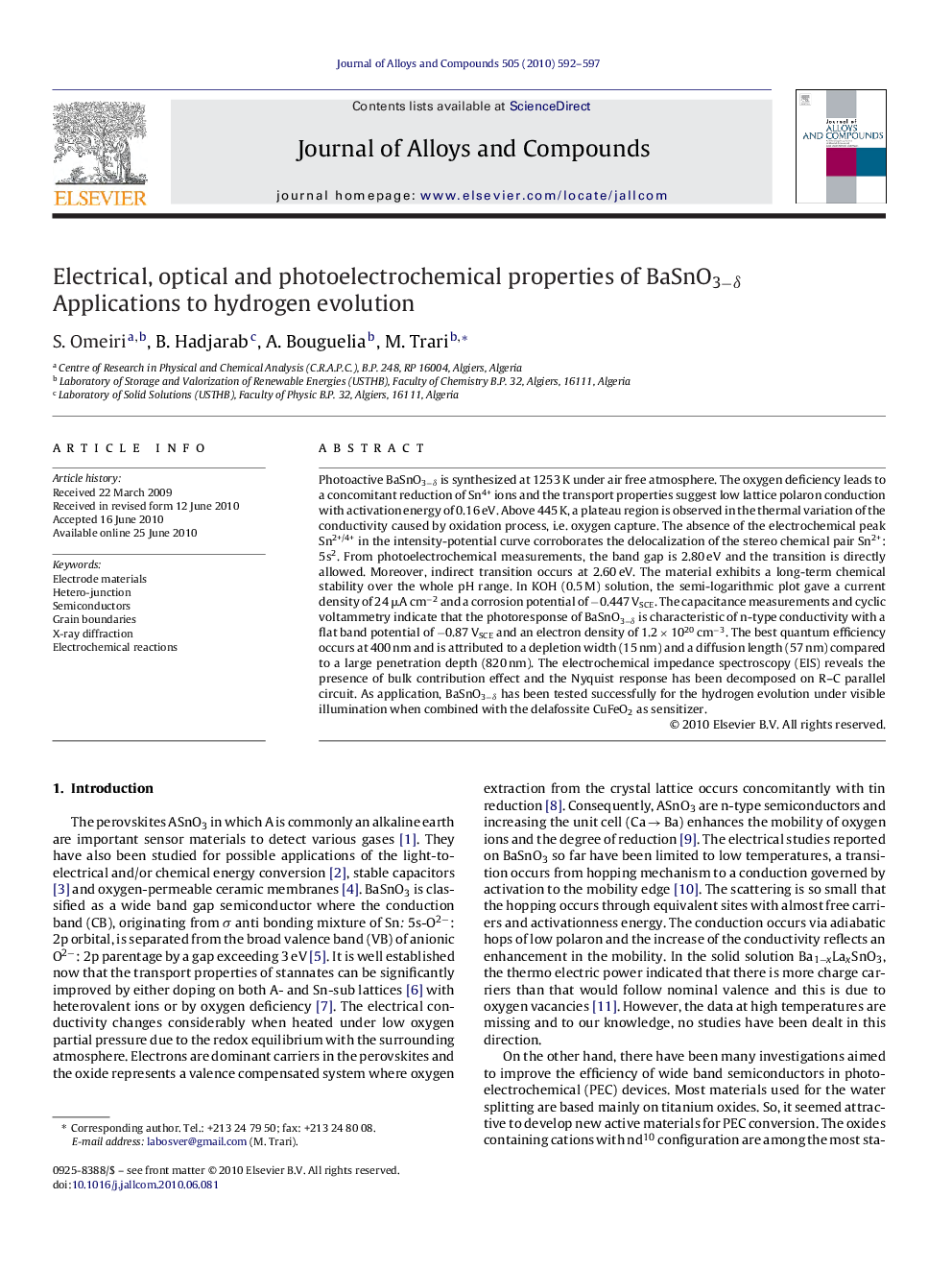| کد مقاله | کد نشریه | سال انتشار | مقاله انگلیسی | نسخه تمام متن |
|---|---|---|---|---|
| 1619898 | 1005726 | 2010 | 6 صفحه PDF | دانلود رایگان |

Photoactive BaSnO3−δ is synthesized at 1253 K under air free atmosphere. The oxygen deficiency leads to a concomitant reduction of Sn4+ ions and the transport properties suggest low lattice polaron conduction with activation energy of 0.16 eV. Above 445 K, a plateau region is observed in the thermal variation of the conductivity caused by oxidation process, i.e. oxygen capture. The absence of the electrochemical peak Sn2+/4+ in the intensity-potential curve corroborates the delocalization of the stereo chemical pair Sn2+: 5s2. From photoelectrochemical measurements, the band gap is 2.80 eV and the transition is directly allowed. Moreover, indirect transition occurs at 2.60 eV. The material exhibits a long-term chemical stability over the whole pH range. In KOH (0.5 M) solution, the semi-logarithmic plot gave a current density of 24 μA cm−2 and a corrosion potential of −0.447 VSCE. The capacitance measurements and cyclic voltammetry indicate that the photoresponse of BaSnO3−δ is characteristic of n-type conductivity with a flat band potential of −0.87 VSCE and an electron density of 1.2 × 1020 cm−3. The best quantum efficiency occurs at 400 nm and is attributed to a depletion width (15 nm) and a diffusion length (57 nm) compared to a large penetration depth (820 nm). The electrochemical impedance spectroscopy (EIS) reveals the presence of bulk contribution effect and the Nyquist response has been decomposed on R–C parallel circuit. As application, BaSnO3−δ has been tested successfully for the hydrogen evolution under visible illumination when combined with the delafossite CuFeO2 as sensitizer.
Journal: Journal of Alloys and Compounds - Volume 505, Issue 2, 3 September 2010, Pages 592–597